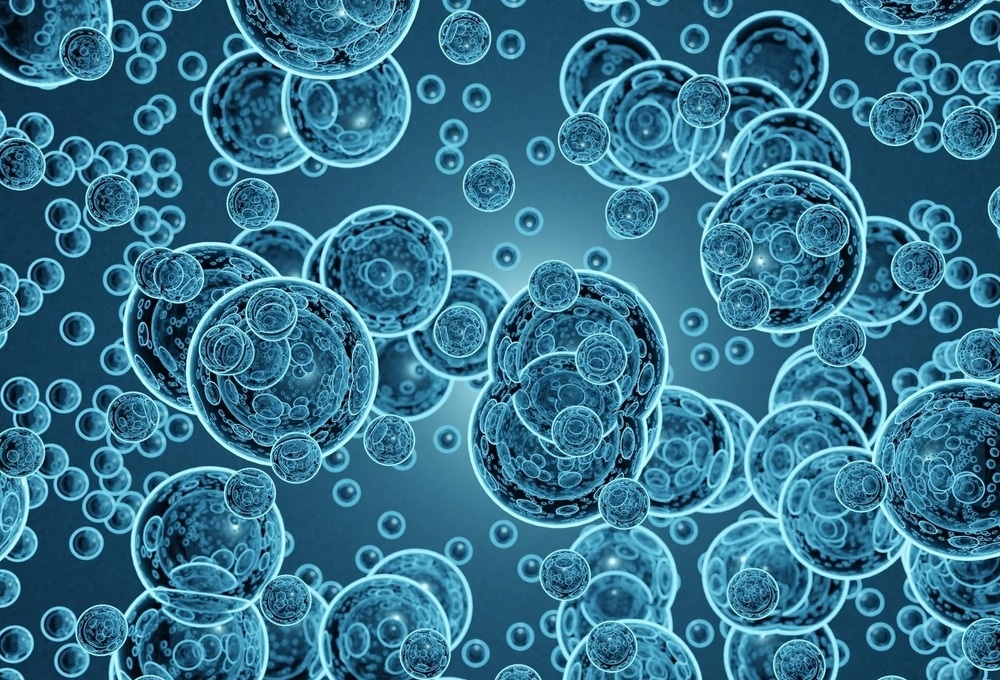Recent years have seen a significant amount of research into the possibilities of using components produced from plants, including plant proteins, triglycerides, and phospholipids, to develop tailored drug delivery systems. The latest research published in the journal Advances in Colloid and Interface Science has covered the general advantages, traits, and prerequisites of plant-based drug delivery methods.

Study: Recent progress in the application of plant-based colloidal drug delivery systems in the pharmaceutical sciences. Image Credit: Love Employee/Shutterstock.com
Challenges in the Development of Targeted Drug Delivery System
Targeted drug delivery entails delivering a pharmacological agent in a functional condition to specified human organs to provide a desired therapeutic effect. Preferably, the dosage in the intended tissue must be in a range that delivers the necessary therapeutic benefit for the specified length of time without producing harmful side effects or poisoning.
Poor solubility in water, poor bioavailability, restricted targeting, low sensitivity, and loss of function owing to metabolic, cytotoxicity, and drug resistance are among the difficulties that conventional delivery systems frequently confront when administering medications.
An essential tactic to boost therapeutic efficacy and lower toxicity is the creation and modification of drug delivery systems.
Advantages of Plant-Based Drug Systems
Plant-based ingredients provide distinct benefits when contrasted to conventional ones. These benefits include degradation rate, bioactivity, minimal cytotoxicity, improved tolerability, ample supply, accessibility, therapeutic efficacy, and a decreased risk of an allergic response and itchy skin. As a result, there is renewed support for using plant-derived substances to create efficient drug delivery systems.
Plant-derived enzymes (such as zein, gluten protein, soy, and lectin proteins), lipids (such as soybean, and sunflower), and phospholipids such as corn oil and soybean have all been studied for their potential use in drug delivery systems.
Effectiveness of Biopolymer Nanoparticles for Drug Systems
Natural polymeric nanoparticles are well-suited for the development of colloidal drug carriers for therapeutic formulations such as drug encapsulation, shielding, and sustained release. The use of biopolymers to build these nanoparticles has several advantages, including their low cost, abundance in nature, bioactivity, good biocompatibility, and chemical stability.
Alginate, which produces a gel in the presence of divalent cations such as calcium, is one of the most commonly utilized polysaccharides in targeted delivery.
Plant proteins are also capable of assembling biopolymer nanoparticles. The hydrophobic helical peptides zein and gliadin can be used to create drug-loaded protein nanomaterials via a solvent removal nanoprecipitation technique. Typically, the protein and medication are emulsified in a biotic solvent (such as 80% ethanol and 20% water) before being administered into water.
Techniques for Fabrication of Biopolymers
Top-down or bottom-up techniques can be used to create biopolymer nanoparticles. Normalization, grinding, and shredding are common top-down procedures for breaking bigger biopolymer materials into small ones.
Bottom-up strategies comprise of antisolvent dispersion, aggregation, gel formation, and cation exchange, which include boosting biopolymer molecule assembly.
Are Nanoemulsions Useful for Targeted Drug Systems?
Micro emulsifier-coated lipid particles (d < 200 nm) are disseminated inside an aqueous solution to form oil-in-water nano-emulsions. They are normally created by mixing an oil phase comprising a repellent medicament with an aqueous dispersion containing a hydrophilic surfactant.
Because of their rapid and extensive digestive process under gastrointestinal conditions, nano-emulsions are notably successful in increasing the bioavailability of water-insoluble drugs. The large specific surface area of the lipid droplets in nano-emulsions allows lipase units to adhere to more locations, resulting in fast digestion.
Uses of Nanoliposomes and Nano Phytosomes
Nanoliposomes are phospholipid-based nanostructures that are often diffused in water. They form coordinated bilayer structures that can contain hydrophilic, or amphiphilic compounds. Drug dispersibility, solidity, solubility, and bioaccessibility can all be improved by encapsulating them in nanoliposomes.
Nanophytosomes are identical to nanoliposomes in structure, except that the phospholipids form compounds with phytonutrients. Physical properties often hold phospholipids and phytochemicals intact. This form of aqueous delivery method, like nanoparticles, can incorporate lipid soluble, amphiphilic, and hydrophilic medicines.
Factors Affecting Drug Delivery Systems
Particle quality is an important property of nano-enabled drug delivery applications because it influences their sensory properties, chemical stability, and performance. Small nanoparticles (d < q50 nm) refract light weakly, resulting in optically transparent or mildly murky dispersions.
Nanoparticles' electrical characteristics are also crucial in defining their durability, physicochemical qualities, and effectiveness.
Drug Release Methods
Dispersion, enlargement, matrix breakdown, and surface abrasion are all processes by which drugs can be discharged from colloidal particles. Variations in environmental factors may boost these release mechanisms in some instances. Adapting statistical methods to experiments conducted for drug release over a certain duration under controlled environments is a common method for determining the trigger mechanism.
To summarize, it may be advantageous in the future to design multipurpose drug delivery systems capable of encapsulating numerous bioactive chemicals. Nonetheless, many of these plant-based delivery methods must be extensively tested for effectiveness, stability, usefulness, and limits.
Further Reading
Mohammadi K. et al. (2022). Recent progress in the application of plant-based colloidal drug delivery systems in the pharmaceutical sciences, Advances in Colloid and Interface Science. Available at: doi.org/10.1016/j.cis.2022.102734
Disclaimer: The views expressed here are those of the author expressed in their private capacity and do not necessarily represent the views of AZoM.com Limited T/A AZoNetwork the owner and operator of this website. This disclaimer forms part of the Terms and conditions of use of this website.